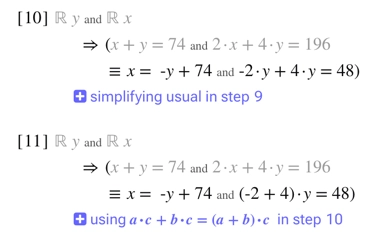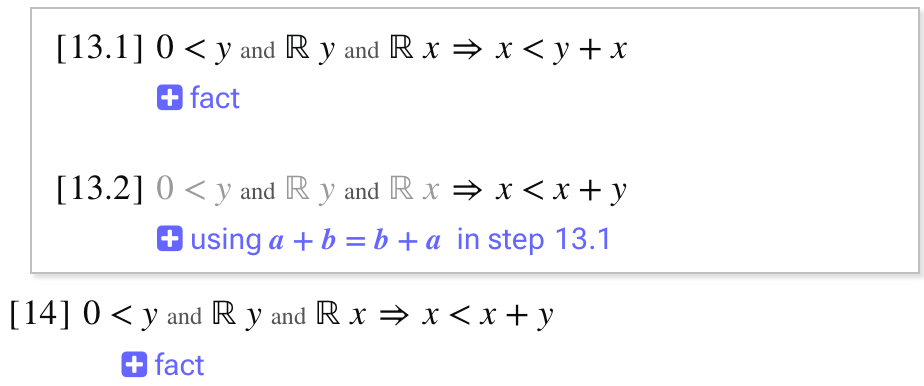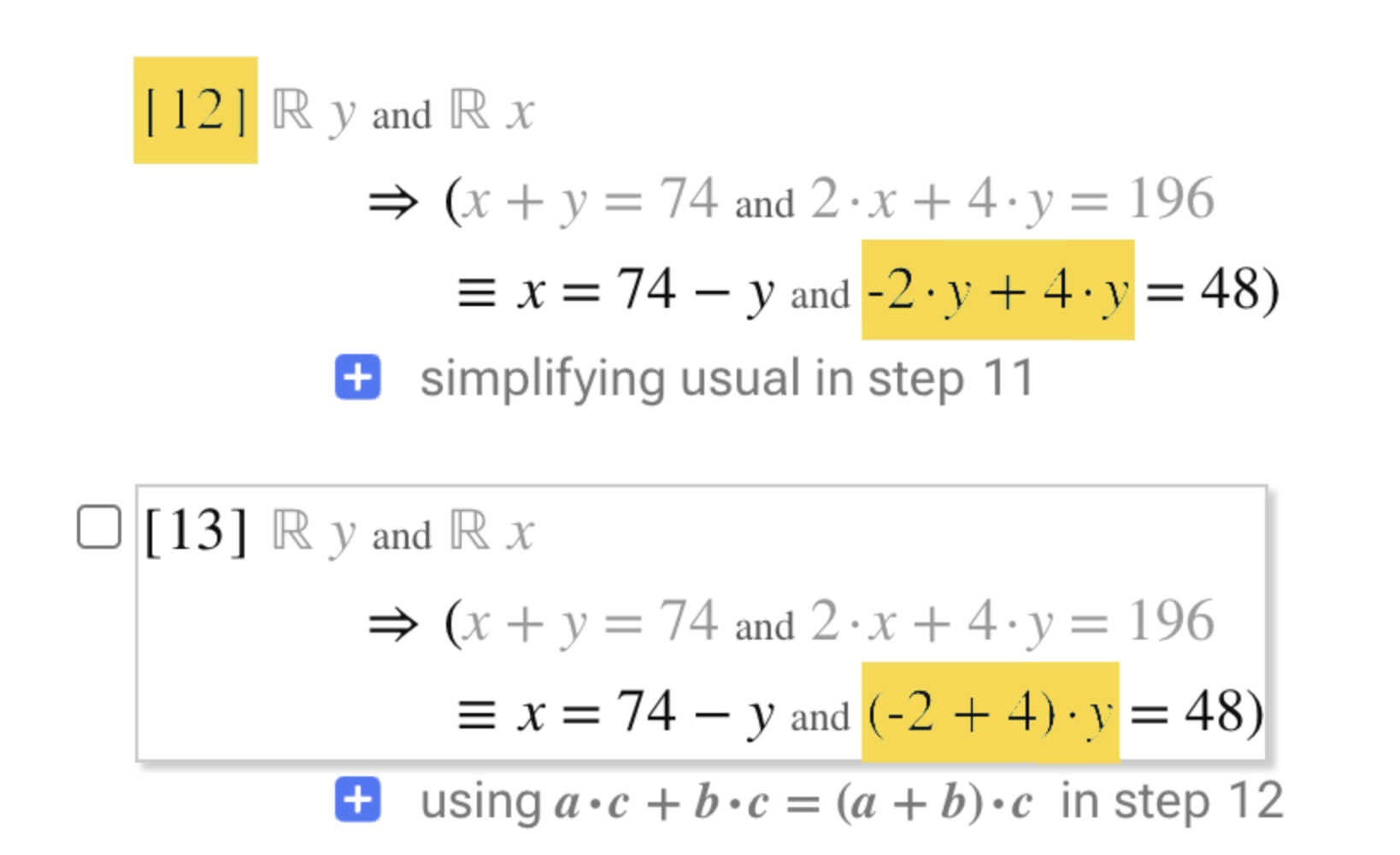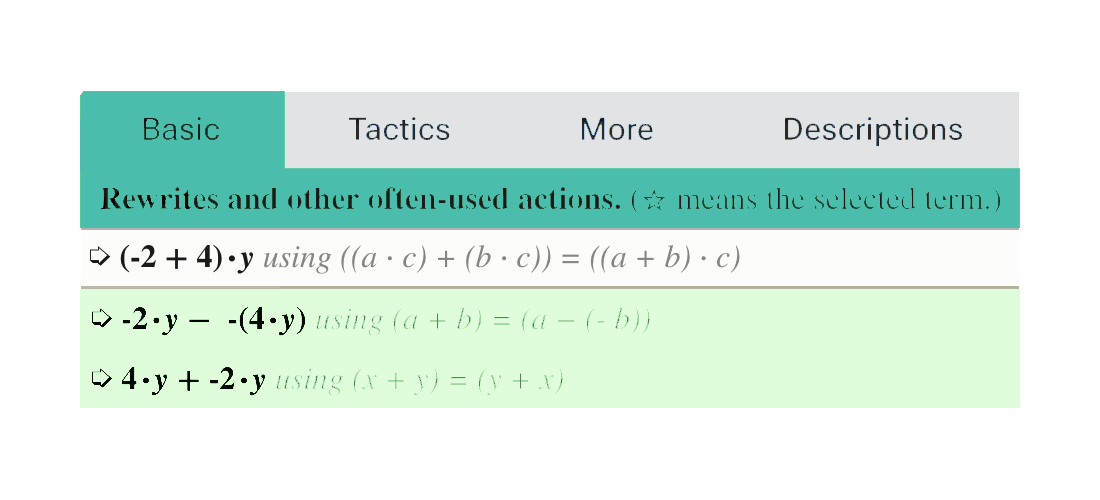A Logical Tool for Mathematics
A modern road to the world of mathematics
A system of deduction built on simple concepts
Explicit, practical, and transparent
A user interface that makes smart suggestions and prevents
errors
Is it for You?
Are you comfortable using basic algebra?
Desire a stronger grasp of mathematical reasoning?
Check it out.
A Live Medium
The reasoning is right in front of you.

Details are available when you need them.

Smart
The user interface is syntax-aware.

The menu suggests steps that can apply to your selection.

Simple and Approachable
All reasoning ultimately uses equations, as below. The
"==" symbol is for logical equivalence
(equality of truth values).
Numbers –
(x * y = 0) == (x = 0) or (y = 0)
Truth values –
(A and A) == A
Functions –
f = g == forall {x. f x = g x}
In memoriam
Peter B. Andrews
1937 - 2025
Professor Peter Andrews developed the formulation of simple type theory (or "higher-order logic") that he called Q0. Everything here is based on that system, and the internal development of the logic here closely follows his.
His book, An Introduction to Mathematical Logic and Type Theory: To Truth Through Proof, is a principal source for the theory behind the logic here.